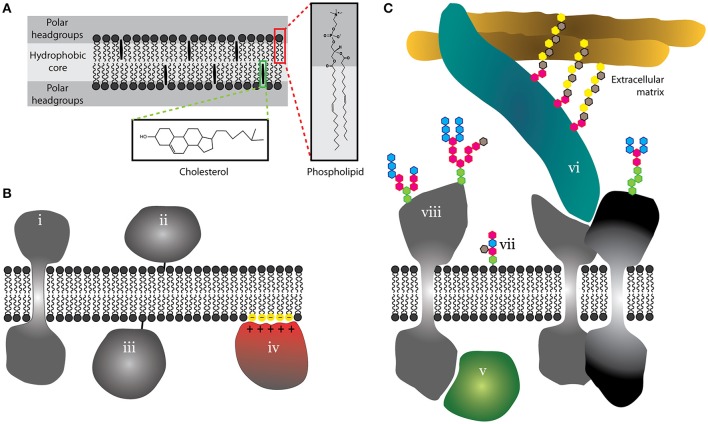Figure 1.
Schematic illustration of the basic structure of lipid bilayer and proteo-lipidic membranes. (A) Cell membranes are lamellar structures with a hydrophobic core and a polar headgroup space. As examples, phospholipids and cholesterol are shown with almost atomistic detail (red and green boxes). (B) Membrane proteins can integrate into membranes (i), but can use lipid anchors (ii and iii) or peripherally associate with membranes via electrostatic interactions (iv). (C) Proteins can further associate with membranes via protein-protein interactions on the cytosolic side (v) or at the interface between the plasma membrane and the extracellular matrix (vi). Outer leaflet lipids (vii) and extracellular domains of proteins (viii) are often glycosylated.

